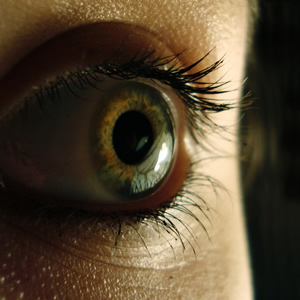Arts organizations are in the business of aesthetic experience. I hope this isn’t a radical statement, but an obvious point. Whether the organization is fostering work by artists, connecting that work to audiences, or preserving that work for now and forever, the core of the matter is the aesthetic connection between an observer and an action or object.
So what, exactly, constitutes an aesthetic experience? And how might we behave as artists, audiences, and managers to make such experience more possible and more powerful?
Fortunately for all of us, this isn’t a new or unusual question. And many have attempted to answer it (not many in arts management*…but we tend to borrow from others anyway). Philosopher Monroe Beardsley offered a particularly useful attempt in an essay on the subject, where he suggested five “criteria of the aesthetic character of experience.”**
- Object Directedness
A willing focus of attention on the object or activity. - Felt Freedom
Release from concerns about past and future. Feeling “lost in the moment.” - Detached Affect
The sense of the object or activity being at a slight distance from our emotions, even though it may spark deep emotions. - Active Discovery
An animated sense of our mind or our emotions at work, seeking and finding patterns or connections. - Wholeness
Feeling integrated as a person (self-acceptance, self-expansion), and/or feeling the work is coherent and whole itself, that all the parts are “of a piece.”
Beardsley proposed that an “aesthetic experience” would require the first criteria along with at least three of the others.
Those who are familiar with Csikszentmihalyi’s characteristics of “flow experience” will recognize many similar themes…even though aesthetics is a focus of philosophy while flow is a focus of psychology (and the two threads were developed independently).***
If we accept these criteria for “aesthetic experience” (which I’m guessing many of you don’t want to, but go with the flow for the moment), then we can imagine aspects of “aesthetic attention” that might help each of us explore and enhance such experience, and help others do so too. These might include:
- Intentional Attention
Bringing energy and effort to what we are observing, and how we are doing so. - Softened Judgment / Discernment over Deciding
Relaxing into our observation to delay our reflex to decide (as I explored in this previous post, and also this one). - Compassionate Detachment
Observing the object, action, or process at a slight distance (retaining empathy), as an “object of creative attention” as I’ve discussed here. - Relentless Curiosity
Leaning into the unknown and complex, responding to challenging discoveries with inquiry rather than fear (I’ve written about this, as well). - Systems Thinking
Perception of the whole as well as the parts (which I’ve discussed a lot, here for example).
If arts organizations are about aesthetic experience, perhaps arts managers should develop and exercise aesthetic attention — not only in their view of the work they support and connect, but also in the processes and practices they use every day. Of course, they should also be extraordinary craftspeople of business and collective action. But might they also be active advocates for the aesthetic?
*A notable exception is WolfBrown’s work on “intrinsic impacts,” which defines and develops many qualities similar to Beardsley’s, and applies them to audience research.
**Beardsley, Monroe Curtis. The Aesthetic Point of View: Selected Essays. Ithaca, N.Y: Cornell University Press, 1982, pp.288-289.
***These connections are explored in greater detail in Csikszentmihalyi, Mihaly, and Rick Emery Robinson. The Art of Seeing: An Interpretation of the Aesthetic Encounter. Malibu, Calif. : Los Angeles, Calif: J.P. Getty Museum ; Getty Center for Education in the Arts, 1990, pp. 5-9.



A wonderful post, Andrew, and one that identifies dimensions of aesthetic experience in a useful way. More important to my thinking, it also places an emphasis on the work as opposed to the author of the work, de-linking to some extent the cult of celebrity which continues to obscure, rather than enhance, experience. I don’t think this minimizes the artist so much as it amplifies the work and the value that the work can deliver to its audiences.
Thanks Neill! Your conversation with my class last week really helped me reshuffle and revisit my thoughts on the subject. As ever, you are a clarifying and connective force!